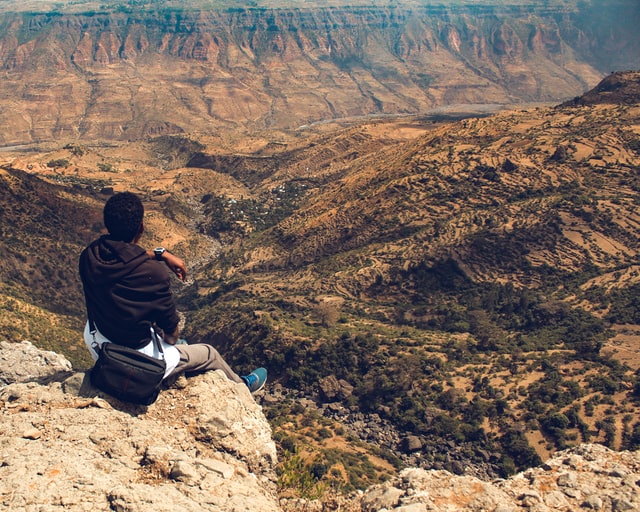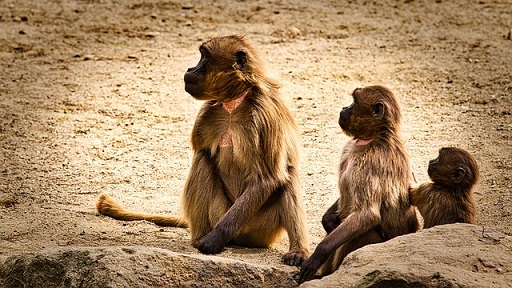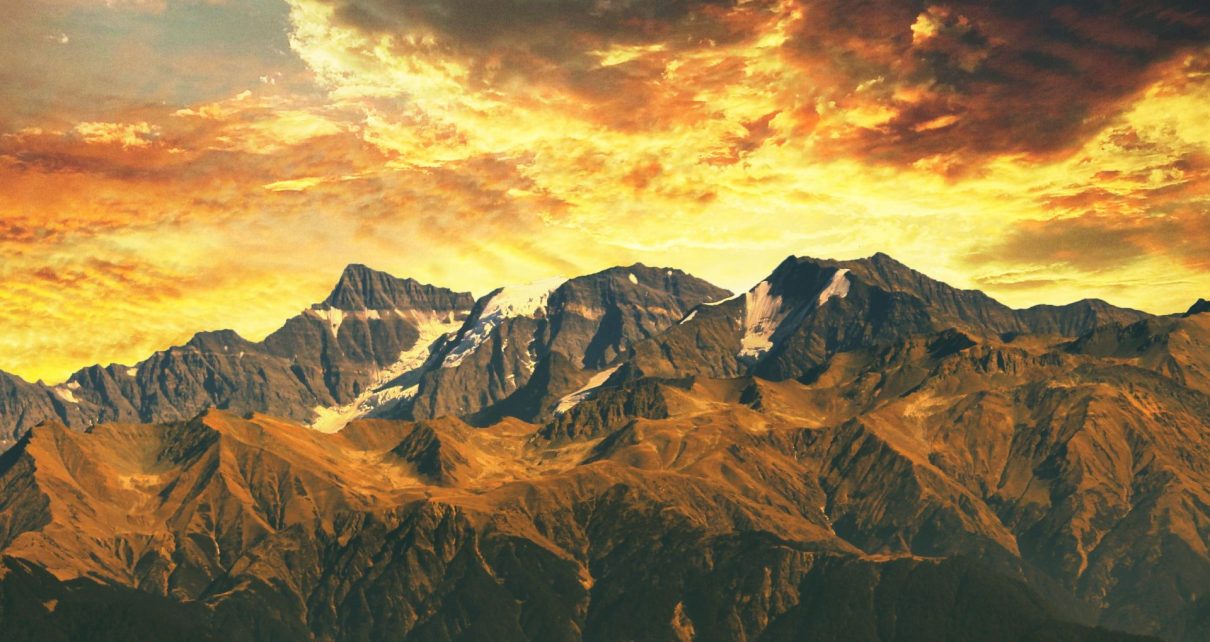The Walk from Sankober
It was an energetic group which set off for a walk that morning (after suffering a downpour the night before), but only at 9 AM after a couple of hours of drying clothes and sleeping bags over a campfire. The walk from Sankober to the Gich camp is part of the traditional Simien walk. Only a few years ago there was no functional road into the park, you had to walk from Debark. There was of course the series of 4 camps to walk to. The standard trip into the park involved 3-4 days walking in and 3-4 days walking out, unless you wanted to add another 3-4 days for an assault on Ras Dashen, the tallest mountain in Ethiopia.
My first visit to the park was in 1998, when the road had already been carved out as far as Chennek – the 4th camp. The road was not in great shape, but passable in dry weather. The road improved over subsequent visits, and now reaches 40 km past Chennek to the fascinating little town of Mekane Berhan. You can take the drive alternative to see the park, and stop at viewpoints along the way, which is a lot easier than having to walk for days. It is also a very nice experience, as the viewpoints are fantastic – with intestine shriveling cliff drops of up to 1000 meters to look over. You can walk for a couple of kilometers to give yourself a break from the car.

Tourists of course will always prefer the walk up. While fairly long sections of the walk follow the road, which is scenic but a bit dreary, you also have long detours away from the road which take you into interesting places. Past Sankober the path follows the ridge overlooking the canyons below. The view from here makes the Grand Canyon look like a sandbox.
Simien View
The Views
I have to admit that one of my many failings is a fear of heights. This was so acute when I was a child that I couldn’t walk across a bridge without intense terror. I gradually overcame this handicap, mostly through hiking in the Canadian Rockies near my hometown of Calgary in Canada. I did get to the point where I’d actually clamber to the top of mountains to gaze out over dizzying heights, although cautiously.
My fear of heights is now unpredictable. Sometimes I’ll strut over to a cliff edge and look down over the side, a bit nervously. Other times a cliff edge reduces me to a pathetic ground hugging whiner, crawling around and calling out in terror at anyone who frightens me by going too close to the edge (especially my children). So you can guess that I’m a lot of fun to have along when you’re walking on a cliff edge path. On the other hand, you can be assured that if I did it, the path is manageable by almost anyone.
Boy in Simiens
At one point the cliff edge view turns sharply to the right, and reveals a vast waterfall which appears to spring out of a cliff face. This view is complemented a few kilometers further by a much closer view, from about 1 km. Once again there is a stomach shriveling cliff edge to negotiate, this time while clambering up some natural stone steps with a steep fall on either side. The view is spectacular enough to justify the chilling but negotiable climb. At this distance you can see that the falls aren’t spontaneously erupting from the cliff, they are the product of a large stream which has cut a deep crevice in the cliff. The falls are truly spectacular – a fairly large body of water dropping hundreds of meters in a large body of spray.
Another reliable entertainment along the way is the large troupes of baboons.Every time I’ve been down this stretch of road there have been plenty. As we walked down from the cliff summit we gradually came closer to 3 troupes of baboons, which eventually surrounded us. Gelada baboons look quite fearsome, especially the males with their huge shaggy coats and frighteningly impressive canine teeth. The reason for the coats is only too obvious as you see a Gelada perched on a rock outcrop with the freezing highland wind whipping around him.

Geladas’ are quite aggressive amongst themselves – so you can see them snarling at and chasing each other, a lot of it not playful. I’m told that each troupe has an Alpha male under constant threat of dethroning by the other growing young males. The dominant male defends his position, with all of the sexual privileges it grants (sound familiar?), but eventually he is driven out by an upstart. He then becomes rogue, traveling on his own and subject to constant harassment by the males of any passing troupe.
Simien View
The females also aren’t slouches in the aggression department – mothers with young are particularly prone to bare their teeth and make aggressive motions at passing humans. Overall my impression is that Geladas are a lot more afraid of humans than we need to be of them, and will retreat at the approach of people. It is nevertheless intimidating being surrounded by a large group of these animals, whose strong hands and sharp teeth could make short work of hapless tourists if they really wanted to.
The other wildlife in the park is more elusive. In several visits to the part I’ve never seen the rare walia ibex as more than a distant spot of black on a cliff face. From the tales that various optimistic guides and travelers have told me, no doubt I am the only person in Ethiopia who hasn’t patted an ibex on the back, but I suspect the alternative explanation that they are bloody difficult to find holds true.
I’ve had considerable more luck with the Simien wolf, they say the rarest member of the canine family, as I’ve seen one and only one on each of my trips to the Simiens. They are ironically far more plentiful in the Bale Mountains (maybe they should be called the Bale wolf). The wolf goes by a variety of names – Simien fox for one, but I have been assured by a biologist studying the creatures that they are genetically a wolf. They look like a long limbed red fox, however. These animals are threatened with extinction through their friendly relations with the dogs of the encroaching shepherds, which mate with them and dilute the wolf genes.
There are many people on the planet who are very clever about birds. I am not one of them. The Simiens are quite renowned for their birdlife, and I’ve certainly enjoyed seeing the variety of kites, hawks, and eagles which enjoy the updraft of the cliff faces to hold them aloft while they spy out their prey. The ibis which peck away in the fields, and various ducks and geese are also interesting (and korhaans I believe). I cannot tell you, however, about my siting of the rare black tufted yellow throated Berberi Australopithecines, because I couldn’t tell one from a turtle. The famed Lammergeier Vulture apparently haunts the ridges of the Simiens, but it could drop a big white gooey on me and I still wouldn’t know what it looked like!!






